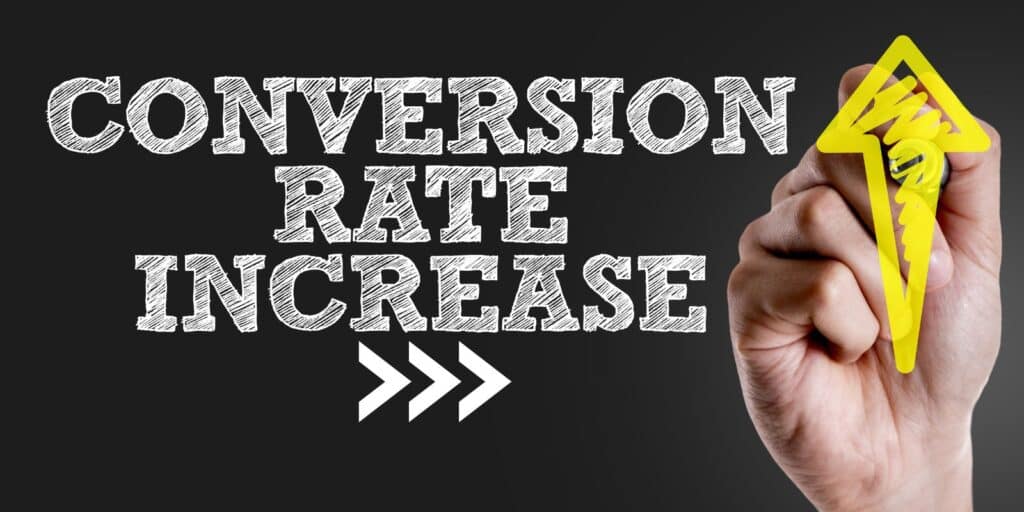
In today’s digital landscape, where online service-based businesses thrive, one crucial metric determines their success: conversion rates. While attracting visitors is essential, converting them into paying customers is the ultimate goal. This comprehensive guide delves into proven strategies specifically tailored for online service-based businesses to boost their conversion rates effectively.
The success of any online service-based business hinges on its ability to convert web and social media traffic into loyal customers. Understanding and optimizing the conversion rate is paramount in driving revenue and sustaining growth.
Understanding Conversion Rates
Definition and Significance
Conversion rate refers to the percentage of people who take a desired action, such as making a purchase, signing up for a service, or filling out a contact form. It serves as a crucial indicator of a business’s effectiveness in persuading leads to take action. A high conversion rate indicates that the business is successfully turning leads into customers, while a low conversion rate signals room for improvement in the conversion process.
Key Metrics: Conversion Rate, Conversion Funnel
Analyzing the conversion funnel, from initial awareness to final conversion rates, helps businesses identify potential bottlenecks and areas for improvement in the customer journey. Key metrics such as click-through rate, engagement rate, and others provide valuable insights into user behavior at each stage of the funnel.
Analyzing Your Current Conversion Rate
Utilizing robust analytics tools like Google Analytics enables businesses to gain insights into visitor behavior, pinpointing conversion barriers, and areas needing optimization. By tracking metrics such as conversion rate by traffic source, device, and landing page, businesses can identify which channels and pages are performing well and which ones require attention.
Optimizing Website Design and User Experience

Mobile Responsiveness
With a growing number of users accessing websites via mobile devices, ensuring a seamless mobile experience is imperative for maximizing conversions. Mobile-responsive design ensures that the website adapts to different screen sizes and resolutions, providing a consistent and user-friendly experience across devices.
Clear Call-to-Actions
Strategically placed and visually appealing call-to-action buttons guide visitors towards desired actions, enhancing conversion rates. Clear and compelling CTAs that stand out from the rest of the page encourage visitors to take the next step, whether it’s making a purchase, signing up for a newsletter, or requesting a quote.
Simplified Navigation
A clutter-free and intuitive navigation structure facilitates easy exploration of products or services, reducing bounce rates and improving conversions. Clear menu labels, logical hierarchy, and search functionality make it easy for visitors to find what they’re looking for and navigate through the website effortlessly.
Content Optimization for Conversion

Compelling Headlines and Copy
Engaging headlines and persuasive copy resonate with visitors, compelling them to explore further and take action. Well-crafted headlines that highlight the benefits of the product or service capture attention and entice visitors to read on. Concise and persuasive copy that addresses the needs and pain points of the target audience encourages conversions by demonstrating the value proposition and guiding visitors toward the desired action.
High-Quality Visuals
Visual elements such as images and videos enhance the user experience, conveying information effectively and building trust. High-quality images that showcase products or services from multiple angles and in different contexts help visitors visualize themselves using the product or benefiting from the service. Videos that demonstrate product features, provide tutorials, or share customer testimonials create a more immersive and engaging experience, increasing the likelihood of conversion.
Testimonials and Reviews
Authentic testimonials and positive reviews from satisfied customers serve as powerful social proof, instilling confidence in potential buyers. Displaying testimonials prominently on product pages or landing pages reinforces the credibility of the brand and alleviates any concerns or doubts that visitors may have. Including customer reviews with star ratings and specific feedback adds credibility and transparency, helping visitors make informed purchasing decisions.
Implementing Trust Signals
SSL Certificates
Displaying SSL certificates instills trust and confidence in visitors, assuring them of secure transactions and data protection. Secure sockets layer (SSL) encryption encrypts sensitive information such as credit card details and personal data, preventing unauthorized access and safeguarding customer privacy. The presence of a padlock icon and “https” in the website URL indicates that the connection is secure, reassuring visitors that their information is safe from hackers and cyber threats.
Secure Payment Gateways
Integrating trusted payment gateways offers a seamless and secure checkout experience, reducing cart abandonment rates. Popular payment gateways such as PayPal, Stripe, and Square provide a secure and convenient way for customers to make payments online. Offering multiple payment options, including credit cards, debit cards, and digital wallets, accommodates different preferences and increases the likelihood of conversion. Providing a seamless checkout process with minimal steps and friction points encourages visitors to complete their purchases without hesitation.
Trust Badges and Certifications
Showcasing industry awards, certifications, and trust badges reinforces credibility and encourages conversions. Trust badges from reputable organizations such as Better Business Bureau (BBB), VeriSign, and McAfee certify that the website is trustworthy and compliant with industry standards. Displaying trust badges prominently on the website, especially on checkout pages and contact forms, reassures visitors that their information is secure and instills confidence in the brand.
Utilizing Social Proof
Customer Testimonials
Sharing real-life success stories and testimonials humanizes the brand, fostering trust and credibility. Featuring testimonials from satisfied customers who have had positive experiences with the product or service provides social proof and validates the quality and effectiveness of the offering. Including customer photos and names adds authenticity and personalization, making the testimonials more relatable and persuasive.
Case Studies
In-depth case studies highlighting successful client partnerships demonstrate the value and efficacy of the services offered. Case studies showcase real-world examples of how the product or service solved a specific problem or achieved a desired outcome for the client. Providing detailed insights into the challenges, solutions, and results builds credibility and establishes authority in the industry. Sharing case studies on the website, in blog posts, or in email campaigns educates prospects and persuades them to take action.
Influencer Endorsements
Partnering with influencers or industry experts lends credibility and expands the reach to a wider audience, driving conversions. Influencer endorsements leverage the trust and authority of influencers to endorse products or services and recommend them to their followers. Collaborating with influencers who align with the brand’s values and target audience ensures authenticity and relevance. Leveraging influencer partnerships across social media platforms, blogs, and podcasts increases brand visibility and credibility, generating interest and engagement from potential customers.
Offering Incentives and Discounts
Limited-Time Offers
Creating a sense of urgency with limited-time offers encourages visitors to act promptly, boosting conversion rates. Limited-time offers, such as flash sales, holiday promotions, and seasonal discounts, create a sense of scarcity and exclusivity, motivating visitors to purchase before the offer expires. Countdown timers, urgency badges, and clear expiration dates emphasize the limited availability of the offer and prompt visitors to take immediate action to avoid missing out.
Free Trials
Offering free trials allows potential customers to experience the service firsthand, increasing the likelihood of conversion. Free trials provide an opportunity for prospects to test-drive the product or service and evaluate its features, functionality, and benefits before making a commitment. By removing the barrier to entry and allowing prospects to experience the value proposition for themselves, free trials reduce risk and uncertainty, making it easier for visitors to convert into paying customers. Offering a free trial period, whether it’s 7 days, 14 days, or 30 days, gives prospects sufficient time to explore the offering and decide if it meets their needs and expectations.
Special Discounts for Subscribers
Exclusive discounts for newsletter subscribers or loyal customers incentivize repeat purchases and foster brand loyalty. Offering special discounts and promotions to subscribers who opt-in to receive email updates and newsletters rewards them for their loyalty and encourages them to engage with the brand on an ongoing basis. Subscriber-exclusive discounts, early access to sales, and VIP perks make subscribers feel valued and appreciated, strengthening their relationship with the brand and increasing their likelihood of making a purchase. Including clear calls to action to subscribe to the newsletter and highlighting the benefits of joining the mailing list encourages visitors to sign up and become subscribers.
Streamlining Checkout Process

Guest Checkout Option
Providing a guest checkout option minimizes friction for first-time buyers, streamlining the purchase process. Guest checkout allows visitors to complete their purchase without creating an account or providing unnecessary personal information, reducing the time and effort required to complete the transaction. Offering a guest checkout option as an alternative to account registration eliminates barriers to conversion and accommodates visitors who prefer a faster and more convenient checkout experience. Guest checkout users can still choose to create an account after completing their purchase, providing an opportunity to convert them into registered customers in the future.
Multiple Payment Methods
Offering diverse payment methods caters to individual preferences, reducing barriers to completing transactions. Accepting a wide range of payment options, including credit cards, debit cards, digital wallets, and alternative payment methods, ensures that customers can choose the payment method that they are most comfortable and familiar with. Providing localized payment methods that are popular in specific geographic regions or markets enhances the customer experience and increases conversion rates. Displaying accepted payment methods prominently on the checkout page and reassuring customers of the security and reliability of the payment process instills confidence and encourages them to proceed with their purchase.
Addressing Cart Abandonment
Implementing cart abandonment recovery strategies, such as email reminders or retargeting ads, encourages visitors to complete their purchases. Cart abandonment occurs when a visitor adds items to their shopping cart but leaves the website without completing the checkout process. By sending personalized email reminders to remind customers of their abandoned carts and encourage them to complete their purchases, businesses can recover lost sales and increase conversion rates. Offering incentives such as discounts, free shipping, or limited-time offers in cart abandonment emails incentivizes customers to return to their carts and complete their purchases. Retargeting ads that display products from abandoned carts to customers as they browse other websites or social media platforms serve as a reminder of their intended purchase and prompt them to revisit the website to complete their transaction.
Personalizing User Experience
Tailored Recommendations
Utilizing data-driven personalization to recommend products or services based on past behavior increases relevance and engagement. Personalized product recommendations leverage customer data such as browsing history, purchase history, and preferences to suggest products that are likely to resonate with individual customers. By analyzing customer behavior and preferences in real time, businesses can deliver personalized recommendations that meet the unique needs and interests of each customer, increasing the likelihood of conversion. Displaying personalized recommendations prominently on product pages, home pages, or email campaigns encourages customers to discover relevant products and make additional purchases, increasing average order value and driving revenue.
Dynamic Content
Dynamic content adapts to user preferences and behavior in real time, delivering a personalized experience that resonates with visitors. Dynamic content can include personalized product recommendations, targeted promotions, or tailored messaging based on customer demographics, location, or browsing history. By dynamically updating content based on user interactions and preferences, businesses can create a more engaging and relevant experience that encourages visitors to take action. Dynamic content can be implemented across various channels and touchpoints, including website, email, and social media, to deliver a consistent and personalized experience throughout the customer journey.
Behavior-Based Emails
Sending targeted emails based on user behavior, such as abandoned carts or browsing history, reengages visitors and encourages conversion. Behavior-based emails leverage customer data and interactions to send timely and relevant messages that resonate with individual recipients. By analyzing customer behavior and triggers, businesses can send automated email campaigns that deliver the right message to the right person at the right time, increasing the likelihood of conversion. Behavior-based email campaigns can include abandoned cart recovery emails, product recommendations, personalized promotions, or reactivation campaigns to win back dormant customers. By nurturing leads and guiding them through the conversion funnel with relevant and timely communications, behavior-based emails help businesses maximize engagement and drive revenue.
Continuous Testing and Optimization

A/B Testing
Conducting A/B tests on elements like headlines, visuals, and call-to-action buttons allows for data-driven decision-making and continuous improvement. A/B testing, also known as split testing, involves creating multiple versions of a web page or email campaign with slight variations and measuring the performance of each version to determine which one yields the best results. By testing different elements and variables, businesses can identify which changes have the greatest impact on conversion rates and optimize their marketing efforts accordingly. A/B testing tools and platforms make it easy to set up and run experiments, track key metrics, and analyze results, enabling businesses to iterate and refine their strategies based on real-time data and insights.
Multivariate Testing
Exploring multiple variations of website elements simultaneously enables businesses to identify the most effective combination for maximizing conversions. Multivariate testing involves testing multiple changes to a web page or email campaign simultaneously to determine which combination of elements produces the highest conversion rate. By testing different combinations of headlines, images, copy, and design elements, businesses can identify which combination resonates most with their audience and drives the greatest results. Multivariate testing tools and software automate the process of creating and analyzing experiments, allowing businesses to efficiently test and optimize their marketing efforts for maximum impact.
Iterative Improvements
Continuously monitoring and refining conversion strategies based on performance metrics ensures sustained growth and competitiveness. Conversion rate optimization is an ongoing process that requires constant monitoring, analysis, and iteration to keep pace with changing market dynamics and consumer behavior. By tracking key performance indicators (KPIs) such as conversion rate, bounce rate, and average order value, businesses can identify areas for improvement and prioritize optimization efforts accordingly. Iterative improvements involve making incremental changes and refinements to website design, content, and user experience based on data-driven insights and feedback. By adopting a test-and-learn approach and embracing a culture of experimentation, businesses can drive continuous improvement and achieve long-term success in conversion rate optimization.
Leveraging Retargeting Strategies
Pixel Tracking
Implementing pixel tracking allows businesses to track visitor behavior and deliver targeted ads to those who have shown interest, increasing conversion opportunities. Pixel tracking involves placing a small piece of code, known as a pixel, on a website to track user interactions and collect data about their behavior. By capturing information such as page views, clicks, and conversions, businesses can create custom audiences and retarget visitors with relevant ads across various online channels. Pixel tracking enables businesses to reach out to users who have expressed interest in their products or services and guide them through the conversion funnel with personalized messaging and offers.
Email Retargeting Campaigns
Sending personalized emails to prospects who have interacted with the website but haven’t converted reinforces brand awareness and nudges them toward conversion. Email retargeting campaigns target users who have visited the website, browsed products, or added items to their cart but haven’t completed a purchase. By sending targeted emails with relevant product recommendations, special offers, or reminders, businesses can reengage prospects and encourage them to return to the website to complete their purchase. Email retargeting helps businesses stay top-of-mind with prospects and provides an additional touchpoint for nurturing leads and driving conversions.
Social Media Retargeting
Retargeting website visitors on social media platforms with tailored ads reinforces brand visibility and encourages engagement and conversion. Social media retargeting allows businesses to show ads to users who have visited their website or engaged with their content on social media platforms such as Facebook, Instagram, and Twitter. By creating custom audiences based on website interactions and targeting them with relevant ads, businesses can stay connected with prospects across different touchpoints and guide them toward conversion. Social media retargeting campaigns can include dynamic ads, carousel ads, and video ads that showcase products or promotions based on user preferences and behavior, increasing the likelihood of engagement and conversion.
Providing Exceptional Customer Support

Live Chat Integration
Offering real-time assistance through live chat support addresses customer queries promptly, instilling confidence and facilitating conversions. Live chat integration allows businesses to provide instant support and assistance to visitors as they navigate the website and explore products or services. By offering a convenient way for customers to ask questions, seek clarification, or request assistance, businesses can remove barriers to conversion and improve the overall customer experience. Live chat agents can provide personalized recommendations, address objections, and guide visitors through the purchase process, increasing the likelihood of conversion and reducing cart abandonment rates.
FAQ Sections
Comprehensive FAQ sections address common concerns and objections, empowering visitors with the information they need to make informed decisions. FAQ sections provide answers to frequently asked questions about products, services, shipping, returns, and other relevant topics. By addressing common concerns and objections upfront, businesses can alleviate customer doubts and build trust and credibility. FAQ sections can also serve as a valuable resource for self-service support, allowing customers to find answers to their questions quickly and easily without having to contact customer support. Well-organized and easily accessible FAQ sections enhance the user experience and improve conversion rates by providing visitors with the information they need to move forward in the purchase process.
Responsive Email Support
Prompt and helpful responses to customer inquiries via email build trust and credibility, nurturing relationships and driving conversions. Email support allows customers to reach out to businesses with questions, concerns, or feedback via email. By providing timely and personalized responses to customer inquiries, businesses can demonstrate their commitment to customer satisfaction and foster positive relationships with customers. Responsive email support ensures that customer inquiries are addressed promptly and effectively, reducing response times and improving the overall customer experience. By offering attentive and helpful support via email, businesses can build trust and loyalty with customers and increase their likelihood of making a purchase.
Conclusion
Optimizing conversion rates is essential for the sustained success of online service-based businesses. By implementing the strategies outlined in this guide, businesses can effectively engage visitors, build trust, and ultimately increase conversions, driving revenue and growth. From optimizing website design and user experience to leveraging social proof and retargeting strategies, each tactic plays a crucial role in maximizing conversion rates and driving long-term success.

